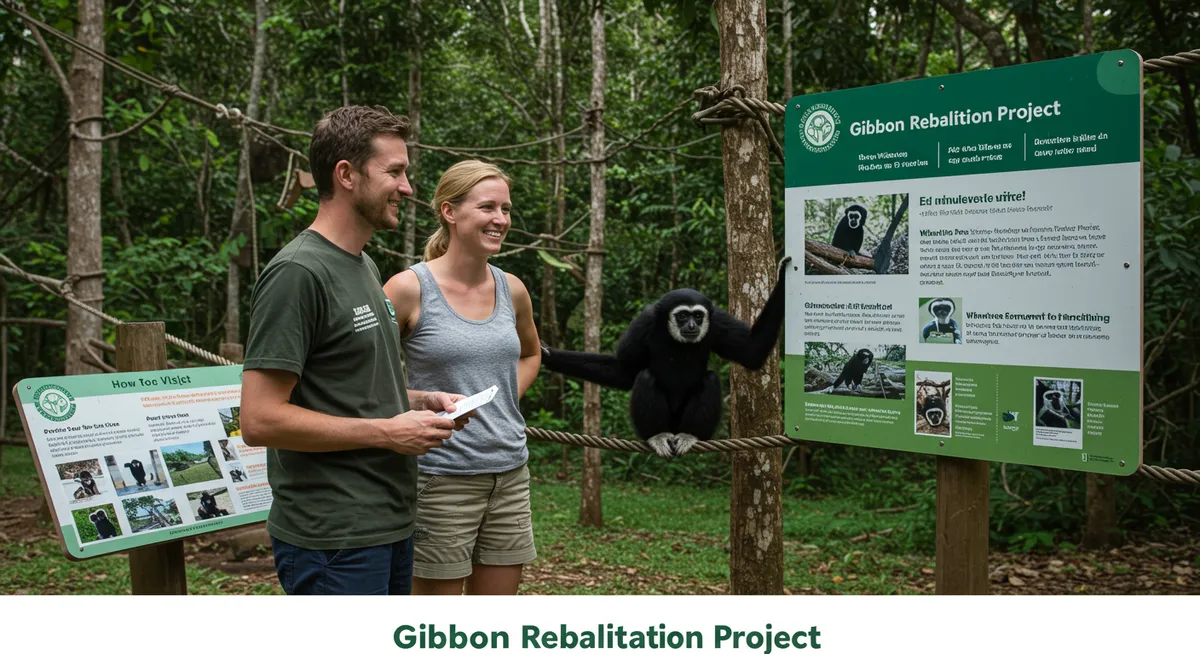
How to Visit Phuket's Gibbon Rehabilitation Project
Table of Contents
Want to find the best nature experiences for this destination? Chat with our nature tourism specialist!
Get Nature TipsCategory: gibbon-rehabilitation-project-phuket-how-to-visit
Your Essential Guide to Visiting the Gibbon Rehabilitation Project in Phuket
Having explored Thailand's rich natural landscapes extensively, I've seen firsthand the vital work of conservation efforts. The Gibbon Rehabilitation Project in Phuket stands out as a beacon of hope for these magnificent primates. It's not a zoo, but a dedicated sanctuary focused on rescuing, rehabilitating, and ultimately reintroducing gibbons back into the wild. Understanding how to visit ensures you have a meaningful and responsible experience, contributing directly to their incredible mission without causing undue stress to the animals.
Getting There: Location & Transport
The Gibbon Rehabilitation Project Phuket is nestled within the Khao Phra Thaeo National Park, a significant natural attraction on the island. While Hat Patong serves as a popular tourist base, reaching the project requires a short journey. My top tip for visitors is to arrange transport in advance, whether it's a taxi, Grab (Thailand's ride-hailing app), or a private driver. Many local tours also combine a visit here with nearby waterfalls, which can be convenient for exploring Phuket's diverse natural attractions. Be sure to confirm the exact location as it's a bit off the main roads, and cell service can be spotty.
What to Expect During Your Visit
Visiting the Gibbon Rehabilitation Project is a truly humbling experience, focusing on education rather than entertainment. You won't be able to interact directly with the gibbons, as the goal is their successful reintroduction into the wild, minimizing human imprinting. Instead, you'll learn about their plight, observe them from a respectful distance in their large enclosures, and understand the rehabilitation process. Knowledgeable volunteers are often on hand to share insights into the gibbon's journey and the challenges they face. Many visitors combine this trip with a visit to the nearby Kathu Waterfall, making for a full day of nature appreciation.
Visitor Guidelines & Ethical Engagement
When you visit the Gibbon Rehabilitation Project Phuket, adherence to their strict guidelines is paramount for the welfare of the animals. This means absolutely no touching, feeding, or disturbing the gibbons. Photography is generally allowed, but without flash. It’s crucial to remember that these are wild animals undergoing a sensitive rehabilitation process. Your respectful observation and understanding are the most valuable contributions. By following these guidelines, you help ensure the project's success and set a positive example for ethical wildlife tourism. Remember, responsible travel helps protect the natural beauty you find near Phuket's stunning beaches.
Supporting the Gibbon Project's Mission
Every visit to the Gibbon Rehabilitation Project directly supports their critical conservation efforts. There's usually a small entry fee, which goes towards food, veterinary care, and facility maintenance for the rescued gibbons. You can also purchase souvenirs from their shop, and donations are always welcome. Many people, myself included, find the work so impactful that they choose to sponsor a gibbon, providing ongoing support. This project plays a vital role in protecting Thailand's biodiversity, and your patronage ensures that the voices of these incredible animals are heard. Consider also exploring Hat Patong's various hiking trails to see more of the region's natural beauty.
Frequently Asked Questions
What is the Gibbon Rehabilitation Project?
How much does it cost to visit the project?
Can I interact with or feed the gibbons?
Visiting the Gibbon Rehabilitation Project Phuket offers a unique opportunity to connect with wildlife conservation on a deeper level. It’s a sobering yet inspiring reminder of humanity’s impact and our capacity for positive change. By understanding how to visit responsibly and supporting their work, you directly contribute to the survival of these beautiful, endangered primates. Make this meaningful stop part of your Thailand adventure and help give these gibbons a second chance at freedom.